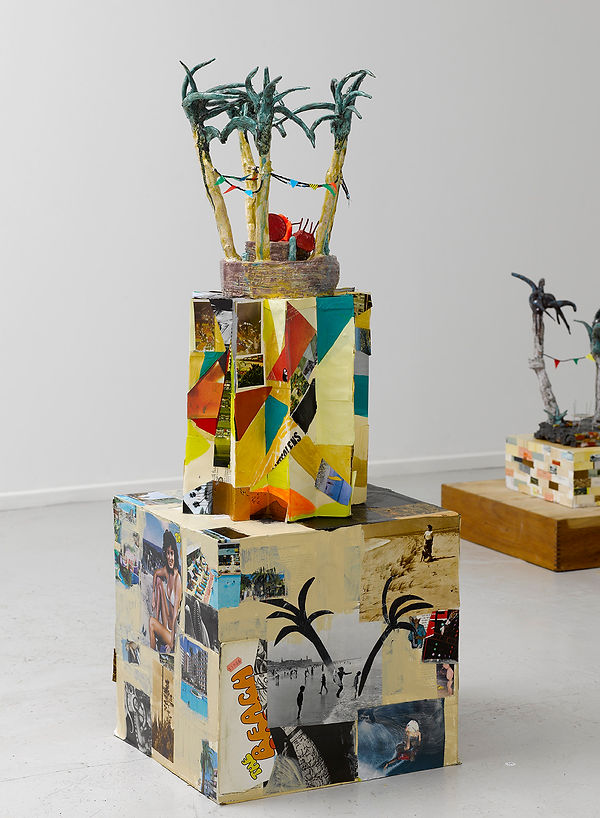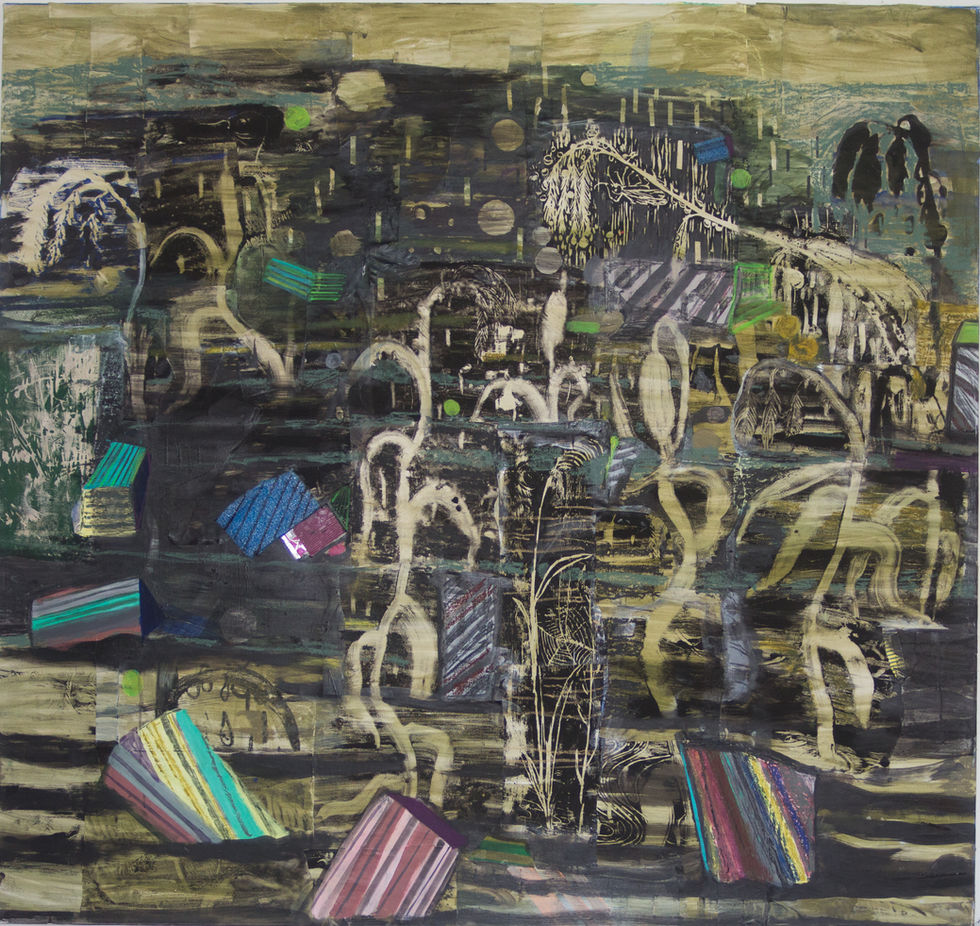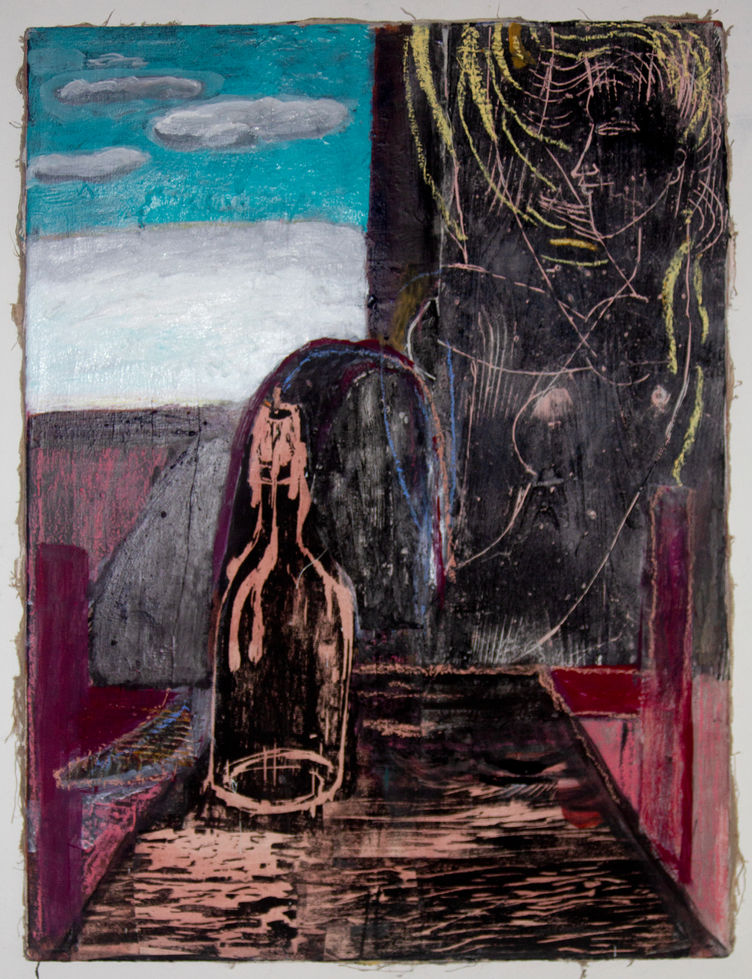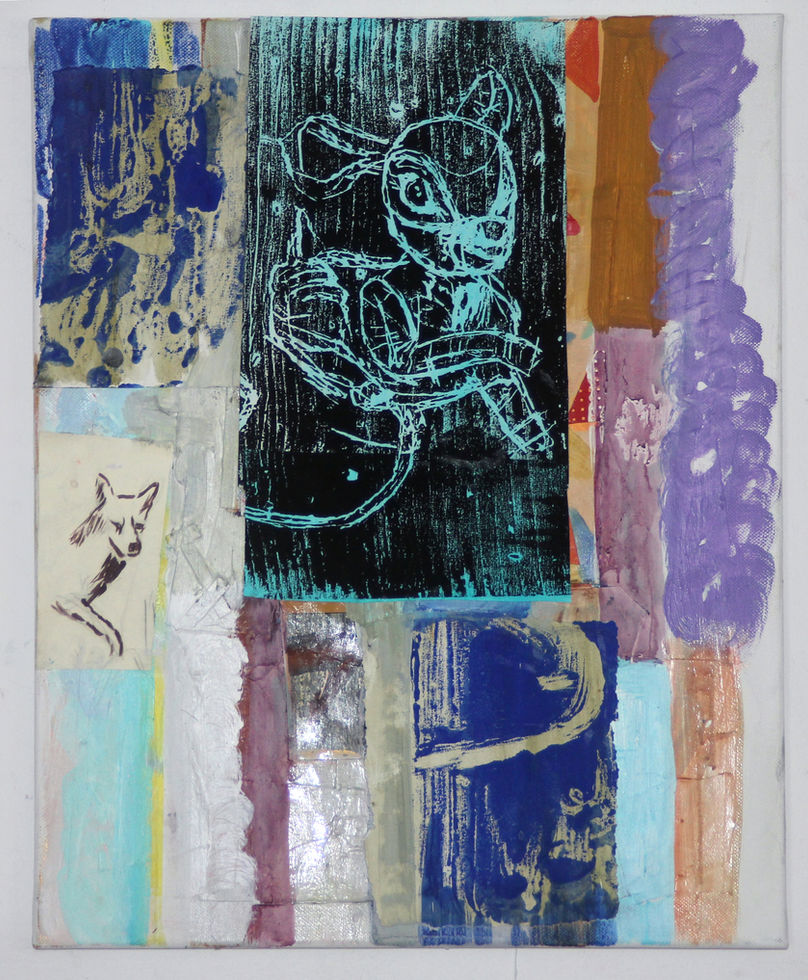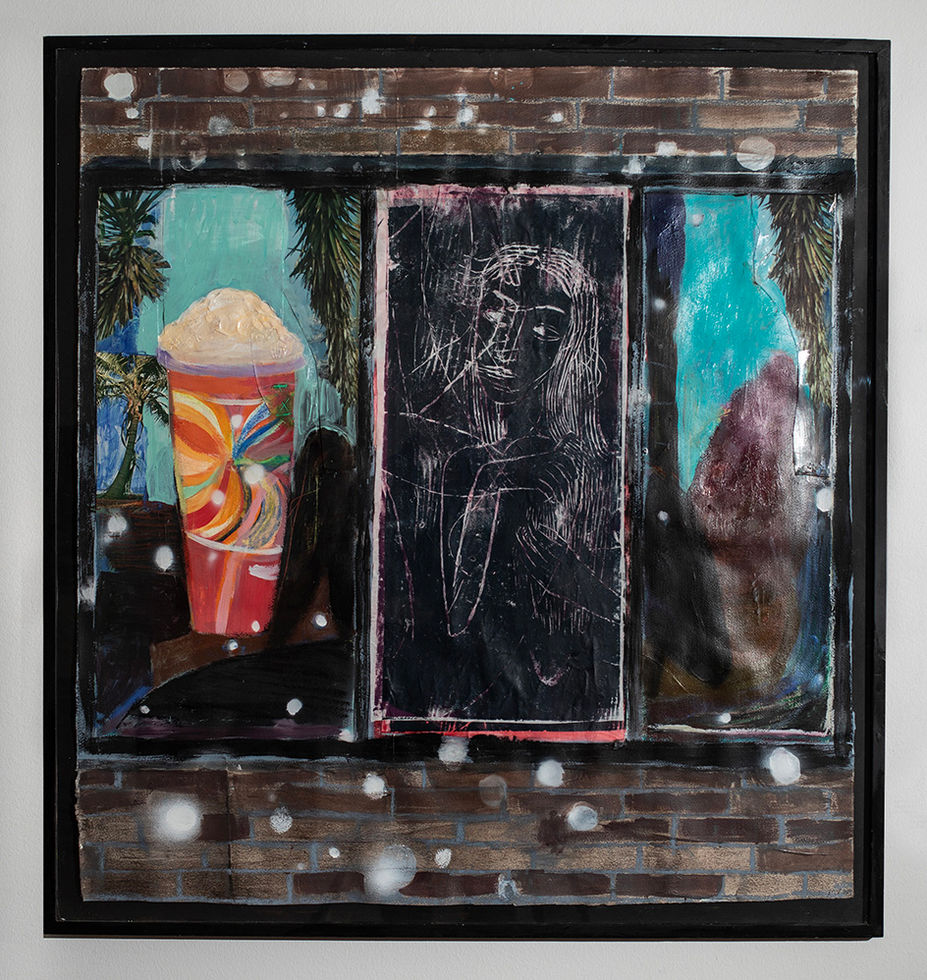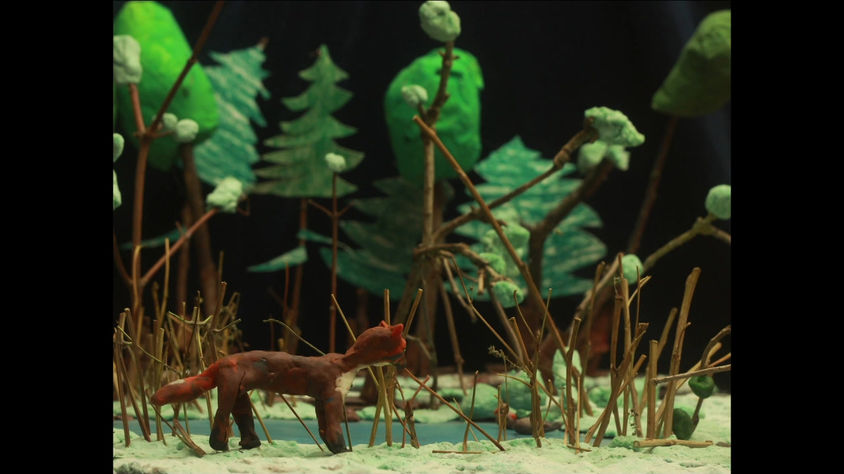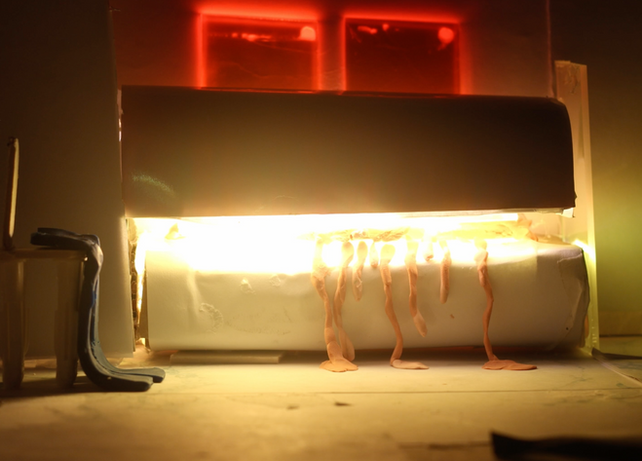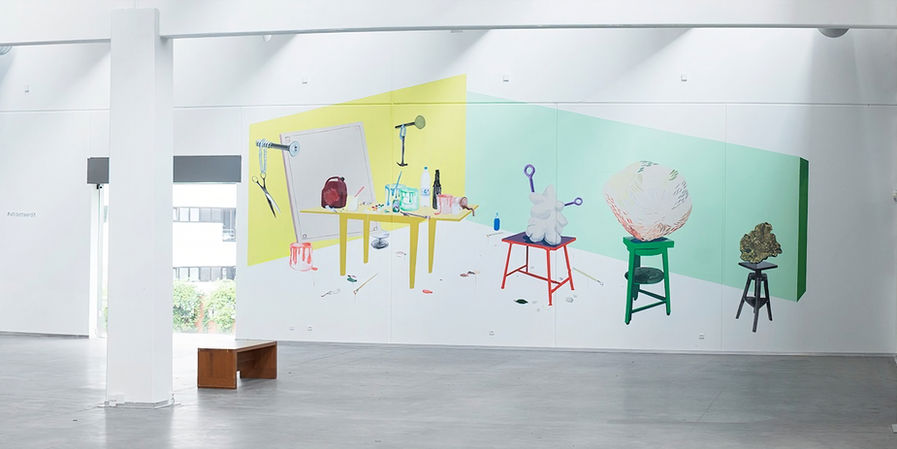BACK IN HOTEL
2006- 2021
Holiday is a luxury only the rich can afford
3 pieces
Gouache, paper, canvas
BACK IN HOTEL
2006- 2021
Holiday is a luxury only the rich can afford
3 pieces
Gouache, paper, canvas
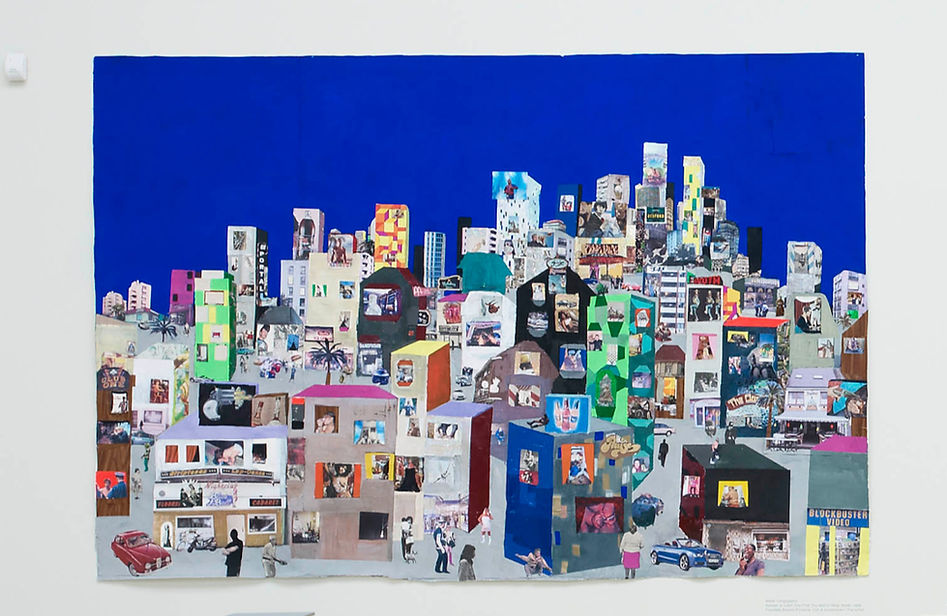
The golden land 2009 mixed media on paper 200 x 300 cm
The artwork found its final destination at Anglia Invest.
Opening 24.9. 2025
HELIUM 17.2 - 8.12.2024 Odsherreds Kunstmuseum In the exhibition helium, Mette Vangsgaard highlights how nature and humankind continue to be inextricably linked in a state of perpetual transformation. Rather than traditional landscapes and flower motifs, we meet people, wildlife and plantlife coexisiting in an erratic present characterized by instability. The exhibition is based on Vangsgaard's investigation of how processes of change and unpredictablility affect us as humans.The motif is modern rural life, composed of wildlife, plantlife and scenes from the everyday – based, in part, on Vangsgaard's own childhood, growing up in the Zealand countryside of Denmark. In her artistic practice, elements of humor and the absurd often coexist with underlying elements of social realism.Helium is derived from the Greek name for the sun and the sun god, Helios. The title of the exhibition refers not only to, the Sun Chariot, the famous Bronze Age artefact from Odsherred, but also to the instability of helium as a chemical element. An instability that characterizes the times in which we live. The exhibition are supported by Grosserer F. L. Foghts Fond, Louis Hansen Fonden, Yorks Fond, Danish Arts Foundation
Mette Vangsgaard THE SUN ALWAYS SHINES ON TV 20. Januar – 25. Februar 2023
THE LANGUAGE OF CERAMICS
21 January – 20 August 2023
Clay Museum of ceramic art Denmark
Everyone knows the feeling. You walk around an exhibition and suddenly there is a work of art that cuts through the confusion and speaks to you. Old or new – it just speaks directly to one. It precisely hits some coordinates in our sensory apparatus that we may not have even known existed. Why does this particular work of art affects you and what buttons does it push? What mechanisms drive the work? With these fundamental questions, the curator Peder Rasmussen has dealt with ceramics throughout his life – both as a practicing ceramicist and as a dazzling communicator. In the exhibition, The Language of Ceramics, he now conveys a diversity of ceramic expressions together with CLAY Museum of Ceramic Art Denmark. With simple analytical tools and a linguistic conceptual apparatus, the audience will be equipped to explore the many works and articulate what they see.

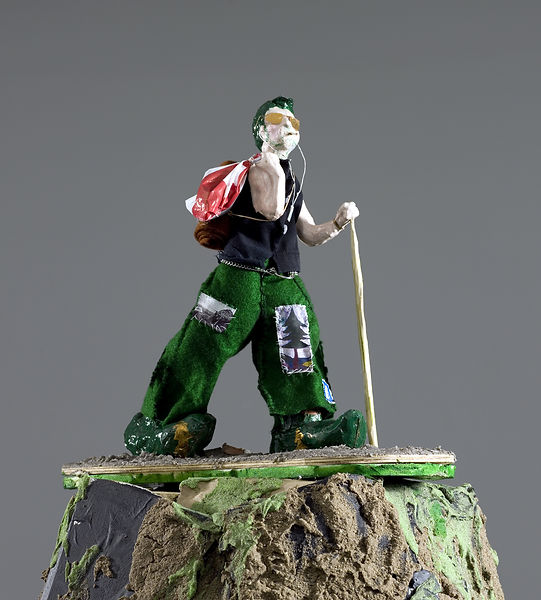
Mette Vangsgaard Fearless (IN A DREAM) 4. December 2020 - 30. January2021 Marie Kirkegaard glæder sig til at byde velkommen til Mette Vangsgaaards nye soloudstilling Frygtløs (i en drøm). Mette Vangsgaard arbejde i udstillingen Fearless (in a dream ) er inspireret af Hypnerotomachia Poliphili eller Polopilo’s Strife of love in a dream. Det er en kærlighedsroman publiceret første gang i Venedig 1499, angiveligt skrevet af Francesco Colonna og et berømt eksempel på den tidligere trykkekunst. Fortællingen er en allegori over en romance. Historien præsenterer Poliphilo, som falder i søvn, og i drømmen rejser gennem mystiske landskaber af ornamenter, blomster og frugtplantager i sin søgen efter sin elskede Polia, og i disse drømmeagtige landskaber møder han uhyrer, guder, nymfer og mærkelige planter på sin vej. Mette Vangsgaard præsenterer en udstilling bestående af figurative værker, der alle fremstår som en del af en større fortælling om drømmenes verden gennem Poliphilos rejse. I to store værker har Vangsgaard kombineret træsnittet med maleriet og tekstil på lærred i sin karakteristiske collageteknik. De to værker præsenterer os for et mørkt landskab, der beskriver natten eller drømmen, og i det ene værk I det høje græs, ses en ung mand sovende under et træ med lange hængende grene. Natten og de mørke landskaber forbindes i udstilling af lyset, dagen, i rumlige skulpturer af håndblæst glas og keramik. I en installation af glasskulpturer med lys ser vi sære overmodne frugter hængende fra træet med de lange grene, og i små landskaber på gulvet møder vi et monster af glaseret keramik, samt nymfer og planterne Mouse Ear skabt som glaskarafler fra Poliphilos fortælling. I Frygtløs (i en drøm) arbejder Mette Vangsgaard videre med sin grundlæggende interesse for de kulturelt bestemte værdier vores liv beror på, som motiverer vores idealer, holdninger og handlinger. Særligt i forhold til vores brug af naturen, der har forbindelse til vores dagligdag, drømme, fortællinger, historie og myte. Herunder ligger den fine balance mellem en fortællende – til tider etiske - stemme i værkerne og interessen for materialernes forskellige muligheder og udtryksformer, som vi kender hende for. Forfatteren George D. Painter har sagt: ’Virkeligheden i sig selv er mystisk – måske er det vores store problem, at vi tror, vi skal forstå og kontrollere alting’. I tråd med dette, bevæger Vangsgaards nye fortællinger sig ind på et symbolistisk spor, der også indeholder ikke-hverdagsagtige bevægelser, der handler om menneskets indre, vores drømme og tilstande.
2022 Poliphilius fruit tree
Poliphilius Fruit Tree, 2020
Handblown glass, wire, led light, textile, glazed ceramics.
The work was a part of the solo exhibition Fearless (in a dream) in 2021.
I was inspired by Hypnerotomachia Poliphili, called in English, Polopilo’s Strife of Love in a Dream or The Dream of Poliphilus. The novel is said to be by Francesco Colonna, first published in 1499.
New Carlsberg Foundation donated Poliphilius' fruit tree to the art collection at Vejen Art Museum. July 2, 2022, the new Vejen Museum opened, with my work installed.
Read more https://www.ny-carlsbergfondet.dk/da/fransk-stentoej-og-dansk-lysinstallation.
More works in the collection Vejen Art Museum
Mette Vangsgaard 9 M WALL PIECE 2015 Group exhibition Alt dette er dit! Vejle Art Museum Alt dette er dit!, supported by Danish Arts Council

REAL WRONG LUFE 2008 Mette Vangsgaard, Jesper Dalgaard, Klaus Thejl Galeria Estrany de la moto, spain Supported bt the danish arts council
REAL WRONG LIFE
GALERIA ESTRANY DE LA MOTO, Barcelona
The exhibition is sponsored by the Danish arts council committee for international visual art
-----------------------------------------------------------------------------------
CASTELLANO
“when I approached it, I could see that there was something wrong” “cuando me aproximé a ello, pude ver
que había algo erróneo”
Es la sensación de que hay algo que no cuadra la que desencadena el conjunto de reflexiones que plantean
Jesper Dalgaard (Skive, 1974), Klaus Thejll Jakobsen (Copenhagen,1964) y Mette Vangsgaard
(Hilleroed,1968), en las obras que presentan y que les lleva a transformarse en herederos de la técnica
conocida como observación participante.
Hablar de la sociedad del bienestar desde el punto de vista de aquél que – voluntariamente o de forma
espontánea– se sitúa fuera de la inmersión diaria. Capaz de rasgar este todo aglomerado para señalar los
elementos que parecen chirriar; trabajan en profundidad sobre los mismos para entenderlos, y recomponen
las partes para reintroducirlas en la sociedad a modo de representaciones acotadas y críticas bajo una
agradable/dulce apariencia, tutorizada por el imaginario colectivo de lo cotidiano y del consumo.
Se trata, visualmente, de un recorrido – a modo de zoom out– que nos lleva de la escala 1:1 del objeto
cotidiano a la escala 1:10 del paisaje grandilocuente, anhelo imaginario próximo a la ciencia-ficción.
Así, establecemos un primerísimo plano que ofrecen piezas como “Portrait of a new rich Landlord in
Copenhagen”, que nos habla sobre las pequeñas pulsiones de la actividad diaria de la clase media-alta. Un
plano medio, representado por piezas como “Rich young ones” o “The city of Breugel”, significativo uso del
collage, que elabora un repaso a la ciudad, a aquellos que la habitan, y los hábitos incorporados y
transmitidos por el imaginario colectivo que se gesta en ella. Finalmente acabamos encontrando una
perspectiva que se aleja de la realidad de la ciudad y los hábitos aprehendidos para contemplar la relación
de uno mismo con el contexto natural que le alberga, con el cual establece un diálogo a veces lejano, a
veces idealizado.
Jesper Dalgaard: Elabora pequeñas conceptualizaciones sobre las reflexiones personales que suelen
presentarse frente a uno mismo como imágenes mentales esporádicas sobre las que lucubrar durante unos
instantes y que tienen como eje central el propio individuo – casi inanimado – y su percepción.
Así mismo, analiza, gradualmente, las relaciones entre grandeza y decadencia. Parte de la arquitectura y la
relación pautante que mantiene la misma con las personas y cómo las necesidades de éstas, a su vez,
también la influencian.
En las estructuras colgantes dibuja paisajes lejanos a los estandarizados; la importancia de los volúmenes
reside en la aproximación a las sensaciones que despierta y a la identificación de los materiales, más que
en el retrato mimético. Un espacio condicionado y condicionante de la percepción que se tiene del mismo.
Klaus Thejll Jakobsen: fija sus piezas como reproducciones a imagen y semejanza de objetos reales,
aunque siempre realizadas con materiales que no son los propios del objeto en sí, con la finalidad de
destacar la idea de recreación.
Pone de manifiesto la superficialidad de aquellas sociedades dónde todo parece ir bien, dejando a un lado,
o incluso ocultando, a aquellas personas menos favorecidas que no disfrutan de los elementos y/o
actividades que, a menudo, se dan por supuestas en la configuración de la sociedad del bienestar.
Mette Vangsgaard: es fundamental en sus obras la aparición de tres binomios: naturaleza y cultura, sueño y
realidad, poesía y crítica. Es a partir de aquí que mediante el uso del collage, y apoyándose en símbolos
extendidos, habla, sobretodo, de la sociedad en su hábitat, así como la relación que mantiene con la
naturaleza. Los espacios de transición entre naturaleza y cultura ( como lugares abandonados) son
captados como escenarios poblados, también por numerosos símbolos, en la cerámica a modo de
monumento melancólico evocado a la tensión romántica del recuerdo de donde venimos.


